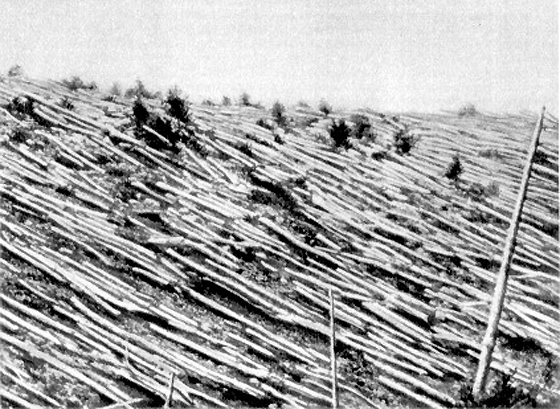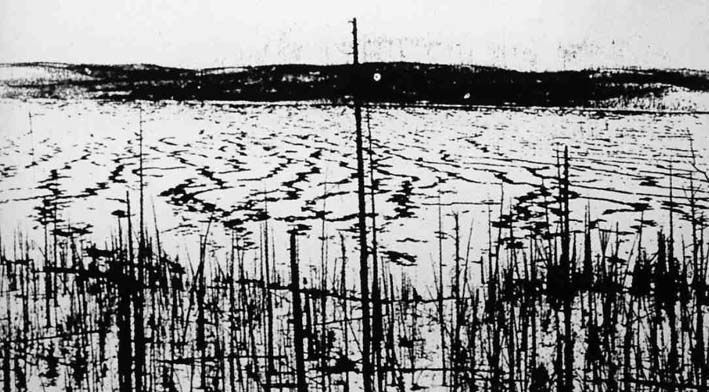


Posted on 06/22/2007 11:46:00 AM PDT by Mike Darancette
The so-called ‘Tunguska Event’ refers to a major explosion that occurred on 30 June 1908 in the Tunguska region of Siberia, causing the destruction of over 2000 km2 of taiga, globally detected pressure and seismic waves, and bright luminescence in the night skies of Europe and Central Asia, combined with other unusual phenomena. The ‘Tunguska Event’ may be related to the impact with the Earth of a cosmic body that exploded about 5–10 km above ground, releasing in the atmosphere 10–15 Mton of energy. Fragments of the impacting body have never been found, and its nature (comet or asteroid) is still a matter of debate. We report results from the investigation of Lake Cheko, located 8 km NNW of the inferred explosion epicenter. Its funnel-like bottom morphology and the structure of its sedimentary deposits, revealed by acoustic imagery and direct sampling, all suggest that the lake fills an impact crater. Lake Cheko may have formed due to a secondary impact onto alluvial swampy ground; the size and shape of the crater may have been affected by the nature of the ground and by impact-related melting and degassing of a permafrost layer. -snip-
(Excerpt) Read more at blackwell-synergy.com ...
PING



Coooool.
” Lake Cheko may have formed due to a secondary impact onto alluvial swampy ground “
Aha! Now we know where the Golgafrinchians landed.
http://www.nostalgiacentral.com/tv/comedy/hitchhikers.htm
Catastrophism ping?

Oh well, I guess it has been there for almost 100 years. It'll still be there later.

Not so sure I’d recommend eating it, tho.
 |
||
| · join · view topics · view or post blog · bookmark · post new topic · | ||
There is growing evidence that electrical activity in the cosmos is more important than gravity in defining how bodies in space interact. The Tsunguska meteor/comet may well have accumulated enough charge in its route to Siberia to cause an electrical discharge (lightning bolt) immense enough to nearly vaporize the puppy, knock down a lot of trees and create a crater with discharge rilles, probably much closer to the ground than the 10 or so kilometers high that is usually quoted.
Why astronomers still refer to comets as “dirty snowballs” is beyond reason. It has been definitively shown via satellite photographs and impact experiments, that comets are very solid with almost zero water content. Orthodox astronomers invented the snowball canard in order to explain comet tails as the evaporation of ice, basically a steam trail.
Now that it is known that comets are in fact meteors, a new theory of comet tail propagation is necessary, one that includes electrical arcing and cratering of the meteor’s surface as its charge potential is changed while moving closer to the Sun’s and through the Sun’s electro-magnetic field.
Ref: www.holoscience.com , www.thunderbolts.info , www.knowledge.co.uk/sis/silver/thornhll.htm , http://video.google.com/videoplay?docid=4773590301316220374 , http://www.plasmacosmology.net/electric.html
Yollopoliuhqui
First time I’ve hear this, and it may solve a long-time mystery. This should get more geological studies to the area funded.

a huge kinetic bomb of explosive adiposity..
Try this
...A prominent reflector observed in seismic reflection profiles ~10 m below the bottom at the center of the lake indicates a sharp density/velocity contrast, compatible with either the presence of a fragment of the body, or of material compacted by the impact. Drilling could solve this dilemma."
Disclaimer: Opinions posted on Free Republic are those of the individual posters and do not necessarily represent the opinion of Free Republic or its management. All materials posted herein are protected by copyright law and the exemption for fair use of copyrighted works.